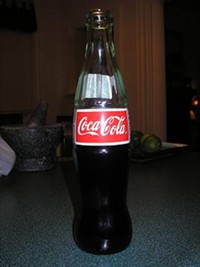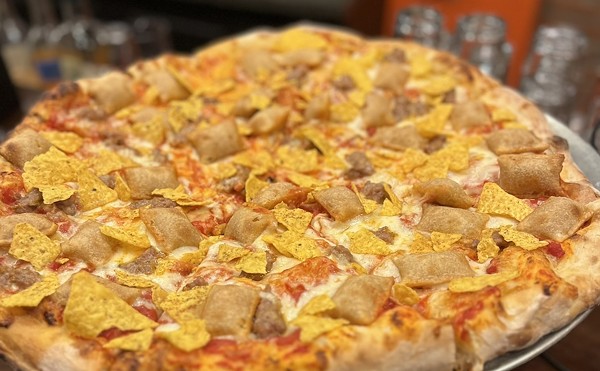Every few years I fail miserably to overcome my adolescent's addiction to Coca-Cola. I make it a few weeks or months -- but then, usually without thinking about it, I'm dropping fifty cents into the office soda machine or snagging a Coke from the little fridge at the grocery store's checkout line.
(I should make clear here I'm talking about regular Coke. I can't handle Diet Coke. And all those flavored Cokes are an abomination. Except Cherry Coke. I have a soft spot for Cherry Coke. But I digress...)
I don't know why I find quitting so tough. I get more than enough caffeine from coffee. I don't much like the taste anymore. (My sweet tooth fades a little bit each year.) Not to mention, if you want just one Coke, you're more likely to find a twenty-ounce bottle than a twelve-ounce can -- and bottled Coke goes flat far more quickly. It doesn't seem as bubbly to begin with.
My most recent impetus for quitting was Michael Pollan's The Omnivore's Dilemma, which inspired me to eliminate high-fructose corn syrup from my diet wherever possible. Since Coke is, essentially, flavored, carbonated high-fructose corn syrup, it was number one on my list of targets.
I did OK -- until a trip to a Cherokee Street taqueria. There I didn't think twice about ordering a Coke.
This wasn't your usual Coke, though. This was a Mexican Coke. In a slim, green-tinted glass bottle with the label painted on. Refresco. As far as I know, you can find Mexican Coke only at restaurants and markets that cater to a predominantly Mexican clientele. (I purchased the bottle pictured above from Jay's on South Grand; you'll find Mexican Coke at most of the taquerias and markets on Cherokee.) As this article from the Chicago Tribune points out, American bottlers make no money from Mexican Coke, which are usually distributed to American restaurants and stores by third-party vendors.
Coke doesn't take this lightly, according to this article from the Santa Cruz Sentinel:
"They're trespassing on the territory rights of many U.S. bottlers," said Coke spokesman [Mart]Martin. "Bringing it into the country is not illegal. But what it does do from the Coca-Cola standpoint is it violates contractual rights that we have with our bottlers. And it has potential trademark right infringements as well."The most obvious difference between American and Mexican Coke -- besides the packaging, that is -- is the sweetener used. Mexican Coke still uses cane sugar, whereas American Coke relies on high-fructose corn syrup. Does that create a difference in flavor? There seems to be a general consensus that Mexican Coke is sweeter. I agree, though that doesn't explain my fascination with it, since the reason I've always preferred Coke to Pepsi (even as a sugar-crazed kid) was that it wasn't as sweet. American Coke has an edge of bitterness to it. Take that away and you have, well, New Coke. And we all remember how that went.
(Or do we?)
To me, the main difference is mouthfeel. When I reviewed Tauqueria el Torito last year, I described Mexican Coke as "syrup heavy" as compared to the American version. Many Mexican Cokes later, I have to admit that this was an imprecise description. In fact, I've seen it described as more effervescent than American Coke. In my opinion, it's not really a matter of more or less effervescent. It's simply different. Mexican Coke leaves a fuzzy coating in my mouth -- hence my note in the Taqueria el Torito review that it's great to pair with spicy foods -- while American Coke (from the can, at least) has a sharper or zippier effervescence.
Another great thing about Mexican Coke: According to the Chicago Tribune article, the glass bottles are reused. Not recycled in the American sense, but actually returned, cleaned (I hope), refilled and then resold. You can tell how old your bottle is by the copyright on the label.
The bottle pictured above, which I enjoyed last night, dates from 2002. It's still in good shape. I wonder how much it would cost to ship it back to Mexico? I'd say it has at least another five years of life left.
Originally published: July 10, 2007






